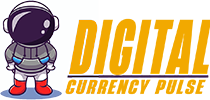[ad_1]
Researchers have developed a brand new AI algorithm, known as Torque Clustering, that’s a lot nearer to pure intelligence than present strategies. It considerably improves how AI techniques be taught and uncover patterns in knowledge independently, with out human steerage.
Torque Clustering can effectively and autonomously analyse huge quantities of information in fields resembling biology, chemistry, astronomy, psychology, finance and drugs, revealing new insights resembling detecting illness patterns, uncovering fraud, or understanding behaviour.
“In nature, animals be taught by observing, exploring, and interacting with their surroundings, with out express directions. The following wave of AI, ‘unsupervised studying’ goals to imitate this strategy,” mentioned Distinguished Professor CT Lin from the College of Expertise Sydney (UTS).
“Practically all present AI applied sciences depend on ‘supervised studying’, an AI coaching methodology that requires massive quantities of information to be labelled by a human utilizing predefined classes or values, in order that the AI could make predictions and see relationships.
“Supervised studying has a variety of limitations. Labelling knowledge is dear, time-consuming and sometimes impractical for advanced or large-scale duties. Unsupervised studying, against this, works with out labelled knowledge, uncovering the inherent buildings and patterns inside datasets.”
A paper detailing the Torque Clustering methodology, Autonomous clustering by quick discover of mass and distance peaks, has simply been printed in IEEE Transactions on Sample Evaluation and Machine Intelligence, a number one journal within the area of synthetic intelligence.
The Torque Clustering algorithm outperforms conventional unsupervised studying strategies, providing a possible paradigm shift. It’s totally autonomous, parameter-free, and may course of massive datasets with distinctive computational effectivity.
It has been rigorously examined on 1,000 numerous datasets, attaining a median adjusted mutual info (AMI) rating — a measure of clustering outcomes — of 97.7%. Compared, different state-of-the-art strategies solely obtain scores within the 80% vary.
“What units Torque Clustering aside is its basis within the bodily idea of torque, enabling it to establish clusters autonomously and adapt seamlessly to numerous knowledge varieties, with various shapes, densities, and noise levels,” mentioned first creator Dr Jie Yang.
“It was impressed by the torque stability in gravitational interactions when galaxies merge. It’s based mostly on two pure properties of the universe: mass and distance. This connection to physics provides a elementary layer of scientific significance to the strategy.
“Final yr’s Nobel Prize in physics was awarded for foundational discoveries that allow supervised machine studying with synthetic neural networks. Unsupervised machine studying — impressed by the precept of torque — has the potential to make an analogous affect,” mentioned Dr Yang.
Torque Clustering might help the event of common synthetic intelligence, significantly in robotics and autonomous techniques, by serving to to optimise motion, management and decision-making. It’s set to redefine the panorama of unsupervised studying, paving the best way for actually autonomous AI. The open-source code has been made accessible to researchers.
[ad_2]
Source link




